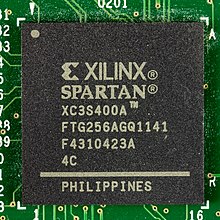
What is an FPGA?
FPGA stands for Field-Programmable Gate Array. It is a type of computer chip that can be programmed to do many different tasks. Unlike regular chips that are fixed in their functions, an FPGA can be customized after it is made. This flexibility makes FPGAs useful for various applications, from making new gadgets to speeding up data processing. Think of it like a blank slate for creating custom electronic circuits.
Back Home
How does an FPGA work?
An FPGA contains an array of tiny, programmable blocks called logic gates. These gates can be connected in many ways to perform different tasks. You can write a program to set up these connections and configure the FPGA to do specific jobs, like processing signals or controlling hardware. It's like setting up a customizable electronic circuit that you can reprogram whenever you need to.

What are the uses of FPGAs?
FPGAs are used in many different fields. In electronics, they can help design and test new devices. In telecommunications, they improve data transmission speeds. They are also used in military applications for secure communications and in automotive systems for advanced driver-assistance features. Their ability to be customized makes them versatile tools for many types of technology projects.

How do you program an FPGA?
Programming an FPGA involves writing code that describes how you want the FPGA to work. This code is written in hardware description languages like VHDL or Verilog. Once the code is written, it is loaded into the FPGA using special software tools. This process sets up the FPGA’s logic gates to perform the tasks you’ve programmed, and you can change it anytime by updating the code.
Recap
What is an FPGA?
An FPGA is a customizable chip used for various tasks.
How does an FPGA work?
It uses programmable logic gates that can be set up in different ways.
What are the uses of FPGAs?
They are used in electronics, telecommunications, military, and automotive systems.
How do you program an FPGA?
You write code in languages like VHDL or Verilog, then load it into the FPGA.